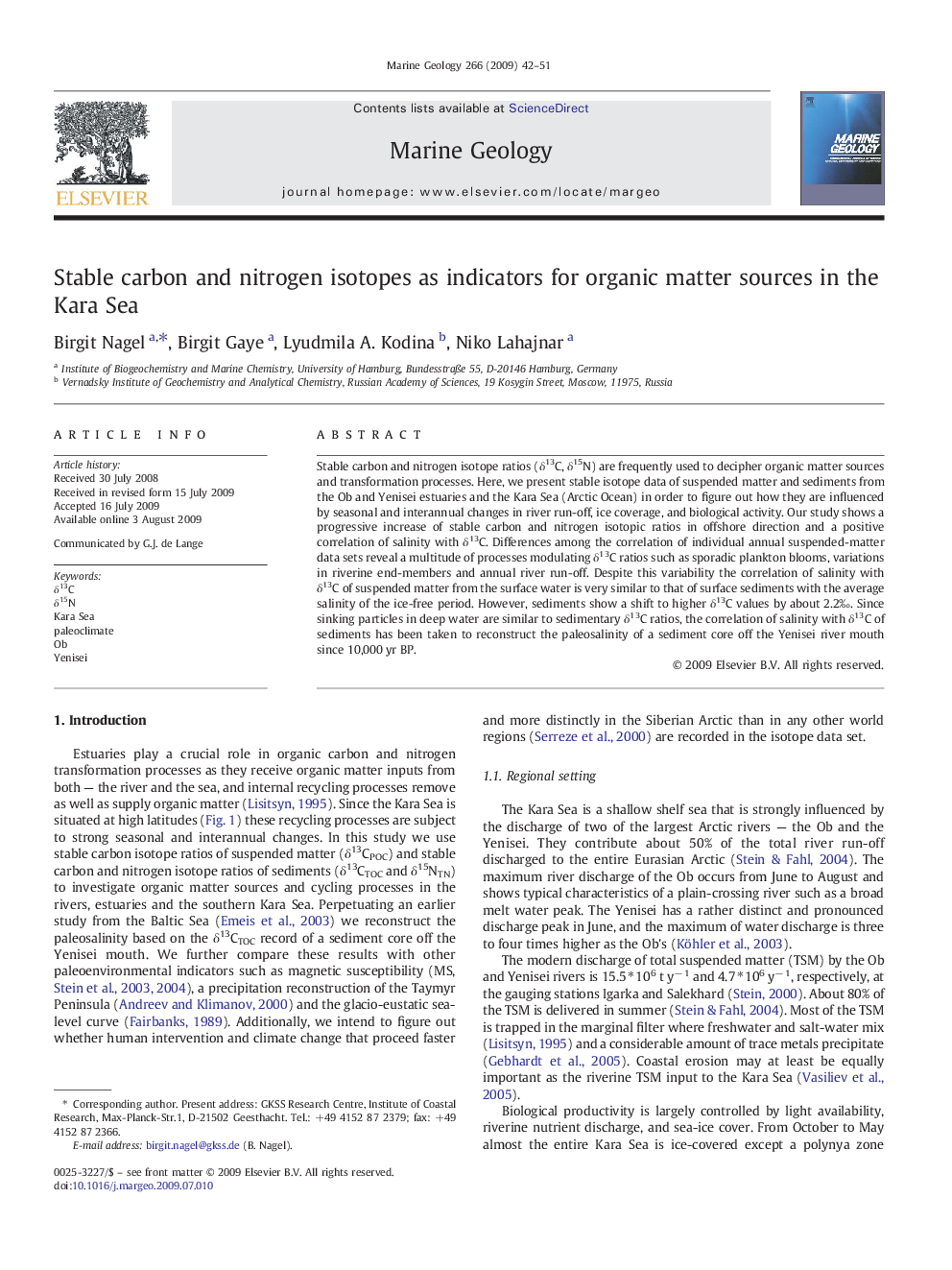| Article ID | Journal | Published Year | Pages | File Type |
|---|---|---|---|---|
| 4718963 | Marine Geology | 2009 | 10 Pages |
Stable carbon and nitrogen isotope ratios (δ13C, δ15N) are frequently used to decipher organic matter sources and transformation processes. Here, we present stable isotope data of suspended matter and sediments from the Ob and Yenisei estuaries and the Kara Sea (Arctic Ocean) in order to figure out how they are influenced by seasonal and interannual changes in river run-off, ice coverage, and biological activity. Our study shows a progressive increase of stable carbon and nitrogen isotopic ratios in offshore direction and a positive correlation of salinity with δ13C. Differences among the correlation of individual annual suspended-matter data sets reveal a multitude of processes modulating δ13C ratios such as sporadic plankton blooms, variations in riverine end-members and annual river run-off. Despite this variability the correlation of salinity with δ13C of suspended matter from the surface water is very similar to that of surface sediments with the average salinity of the ice-free period. However, sediments show a shift to higher δ13C values by about 2.2‰. Since sinking particles in deep water are similar to sedimentary δ13C ratios, the correlation of salinity with δ13C of sediments has been taken to reconstruct the paleosalinity of a sediment core off the Yenisei river mouth since 10,000 yr BP.
